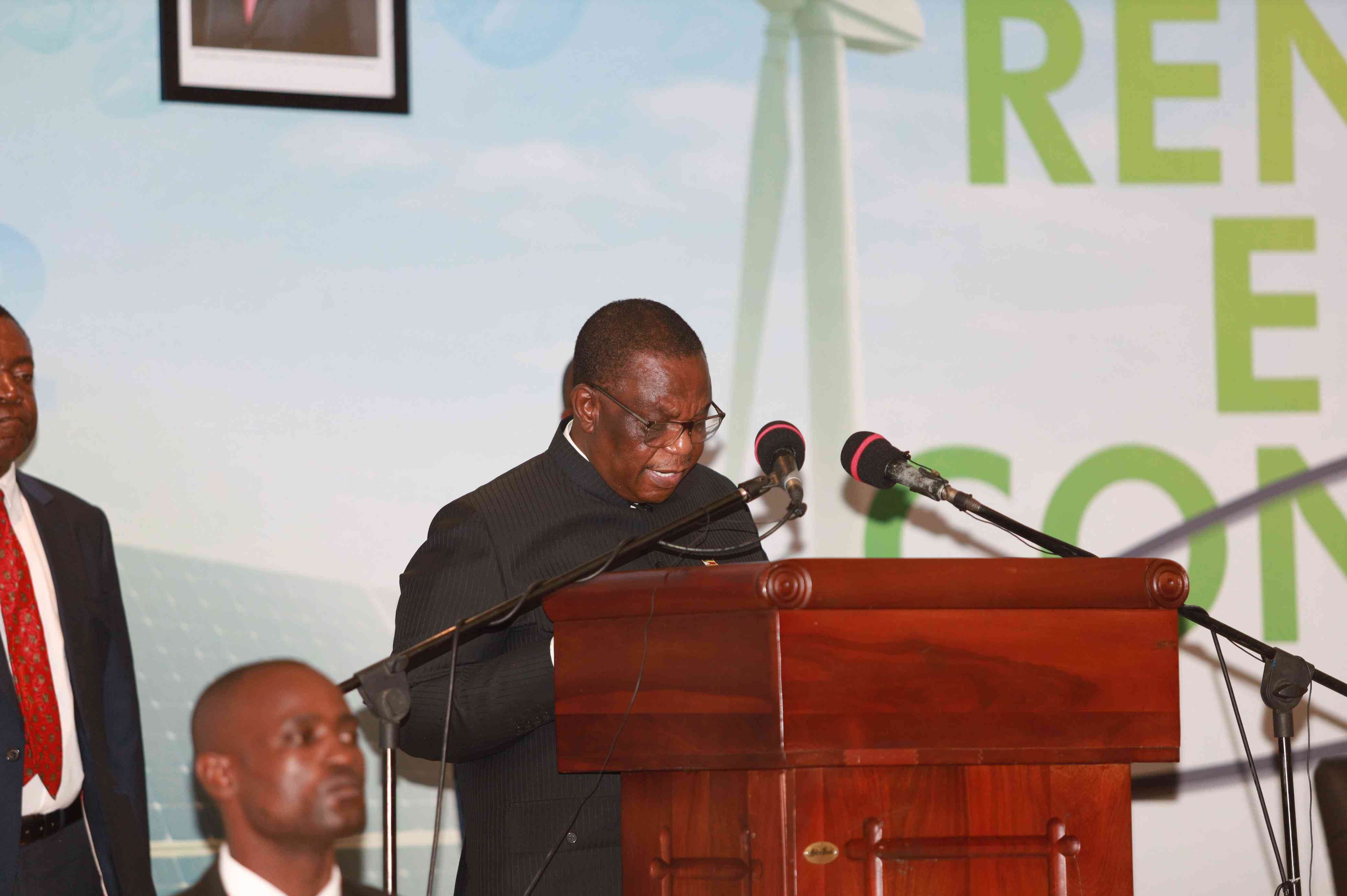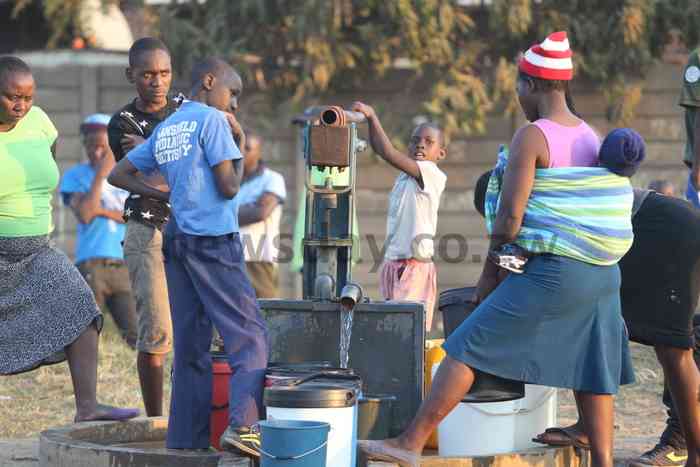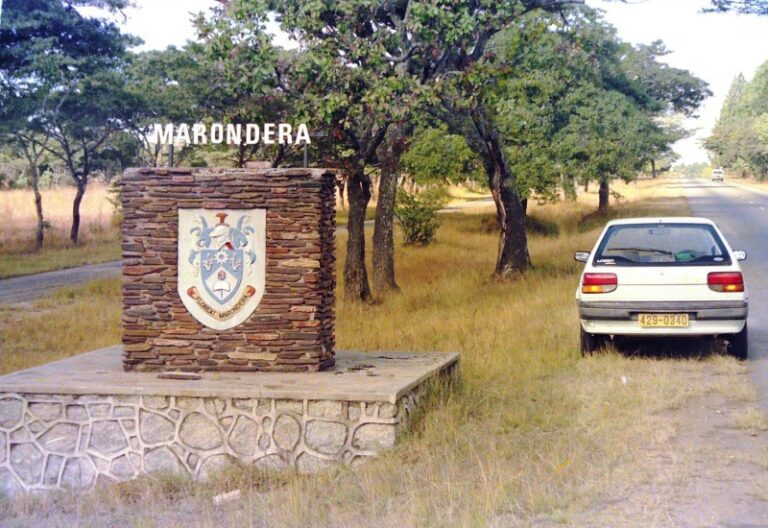
Zimbabwe is on the cusp of a green energy revolution if the number of new projects that are on the pipeline is anything to go by.
An array of projects were announced at the just ended fifth edition of the International Renewable Energy Conference and Expo organised by one The Standard in conjuction with the Energy and Power Development ministry, which ended in Victoria Falls on Friday.

One of the key highlights of the conference was the focus on new renewable projects.
The United Nations Development Programme (UNDP) unveiled its Energy Offer Project where it expects to develop five electricity mini grids in rural Zimbabwe worth US$1.5 million.
UNDP’s initiative’s main objective is to accelerate energy transition and closing the energy access gap through the provision of universal access to modern energy services.
The Energy Offer Project, which is being implemented in partnership with the Ministry of Energy, Rural Electrification Agency (REA) and its partners will power irrigation schemes, businesses, clinics, schools, and community water pumping schemes.
Cassandra Kadenha, the UNDP’s Energy Offer Project coordinator, told the conference that the initiative will help to accelerate Zimbabwe’s adoption of renewable energy sources at a time the world is seeking solutions to climate change.
- Mavhunga puts DeMbare into Chibuku quarterfinals
- Bulls to charge into Zimbabwe gold stocks
- Ndiraya concerned as goals dry up
- Letters: How solar power is transforming African farms
Keep Reading
“The UNDP Energy Offer Project identifies optimised action points for a renewed approach towards accelerated energy transition and closing the energy access gap in Zimbabwe for Sustainable Development Goals achievement through green investment,” Kadenha said.
“This will pave way for regular renewable energy technology-specific investment forums in the future.
“Support through a pre-feasibility study will act as the first step in derisking pipeline projects with the goal of attracting investment in the short to medium term.
“We have realised that potentially lucrative projects usually do not go beyond the drawing board because they simply do not have the resources that are needed in the early stages of project preparation and as UNDP this is where we are coming from.”
UNDP said it had identified five potential mini grids from 10 sites following various studies.
“We have developed pre-feasibility studies from 10 pre identified sites and these sites have been identified from the rural energy master plan and the map shows that areas where these have been done and the objective of the pre-feasibility study is to provide an initial scoping assessment so as to ascertain the technical potential of the project to support rural energy access,” Kadenha added.

“Five mini grids have been selected from 10 sites by assessing their readiness for them to be developed for an economically sustainable mini grid based on factors such as the accessibility of the area, infrastructure present in the area, demography, economic profile and energy resources present as well as possibility of the people to have access to finance and micro credits.”
It also emerged at the conference that the government is in the process of screening 30 renewable energy projects by independent power producers (IPPs) to guarantee their bankability.
Treasury and the Ministry of Energy and Power Development said 10 IPP projects had been given government guarantees and they were given their documents at the end of the conference.
The 10 IPP projects can generate a combined 271 megawatts (MW) of power.
Finance, Economic Development and Investment Promotion minister Mthuli Ncube told The Standard in an exclusive interview that Treasury would guarantee another 30 IPP projects.
“We expect over 30 IPPs to come through,” Ncube said.
“That will produce an additional 1 000 megawatts of electricity, all of them renewable.
“The bulk of them are solar, but there will be some hydro, mini-hydro projects, all of different sizes.
“So, we should expect at least a 1 000MW to come through over time,” Ncube told this paper.
“Really, this is just the start. "You may recall, or not, at the end of December 2022, I actually did a press conference at the Meikles Hotel basically announcing these IPPs.
“And now, we are going through them one by one to make sure they are okay with the terms of the government implementation agreement which covers currency convertibility, an economic tariff and a guarantee on the power purchase agreement.”
The selected IPPs will benefit from a capped tariff of US$9c per kilowatt hour (kWh) for solar energy, regardless of the capacity, against the current tariff of US12 cents/kWh.
Ncube said Treasury was looking forward to accelerated investment in the renewable energy space.
If an IPP defaults, the Treasury boss said the government would step in.
“Who defaults is Zesa or ZEDTC (Zimbabwe Electricity Transmission and Distribution Company).
“So this is the government guarantee that should ZETDC be unable to pay the IPP investor for the electricity that they have supplied onto the grid, central government through Treasury will step in to pay the IPP investor so that is really the guarantee.”
Treasury will be guaranteeing the power purchase agreement for the electricity that ZETDC would have purchased from the IPP.
Zimbabwe has embarked on aggressive initiatives to combat the growing power deficit in the country, which ranges between 500MW to 1 000MW on average.
According to Southern African Power Pool, the country has an installed capacity of 2 412MW, but only has an operating capacity of 1 400MW, against a peak demand of 1 900MW.
“One of the key instruments that we deem to be a game changer in the sector (energy) is the development of the government project support agreement (GPSA), which is a government implementation agreement for our energy sector,” Energy and Power Development minister Edgar Moyo said.
“This document was crafted with the help of the African Development Bank’s legal support facility.
“The committee that developed this document was composed of my Mmnistry; the Ministry of Finance and Investment Promotion; Zimbabwe Investment and Development Agency; Reserve Bank of Zimbabwe; Zimbabwe Energy Regulatory Authority (Zera); and ZETDC.”
He said through the technical and financial support of the Africa Legal Support Facility they contracted two law consulting firms, who guided them through the development of the project.
“I am glad to announce that the document is now complete,” Moyo added.
He said the revised Nationally Determined Contributions of 2021 sought to reduce Greenhouse Gas Emissions (GHGs) by 40% per capita across all sectors of the economy.
Thermal energy has become the country’s biggest source of power, overtaking hydro owing to depleting water sources.
“This target must be approached at with the National Vision in mind, which is to achieve an upper middle-income economy by 2030,” Moyo added.
“The Ministry of Energy and Power Development highly appreciates your valuable inputs at this International Renewable Energy Conference.
“This conference has become a significant event on our calendar and sets the tone for the year in our renewable energy space.
Energy is the driver for economic and sustainable development over the world at a time the energy sector is being advised to utilise renewable energy sources.
In Zimbabwe, a significant urban-rural disparity exists when it comes to access to electricity with a large proportion of the rural population still lacking access to electricity.
President Emmerson Mnangagwa in a speech read on his behalf by Vice-President Constantino Chiwenga said challenges posed by climate change demanded decisive action by governments.
“The multi-pronged challenges of climate change coupled with the urgent need to industrialise our country demand you to be bold and decisive in the type of interventions and investments you make to close the energy gap,” Mnangagwa said.
“As we march towards realising energy self-sufficiency, the second republic is increasing the share of renewables as we migrate from non-renewable sources.
“Going into the future, we shall continue to prioritise the maintenance and rehabilitation of existing energy infrastructure over and above new green-field energy projects.”
“As ministries, departments and agencies in the energy sector, you are challenged to facilitate and not to frustrate partners and investors.”
He urged the energy sector to shift the discourse so that the country charted greener development pathways that did not compromise environmental biodiversity and the pressing need to modernise and industrialise Africa.

Mnangagwa also said the government will continue to fine-tune policies and heighten the implementation of flagship projects to manage the uncertainties associated with climate change.
Zimbabwe experiences a power deficit of 500 megawatts (MW) to as much as 1 000MW owing to mostly climate change.
Delegates from over 10 countries attended the conference.










